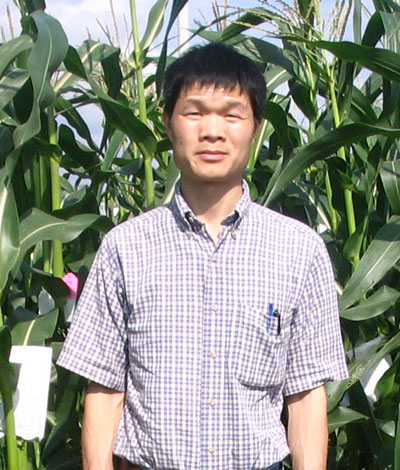-
64浏览
-
0点赞
-
0收藏
-
0分享
-
158下载
-
0评论
-
引用
期刊论文
Uneven chromosome contraction and expansionin the maize genome
,-0001,():
Maize (Zea mays or corn), both a major food source and an important cytogenetic model, evolved from a tetraploidthat arose about 4.8 million years ago (Mya). As a result, maize has extensive duplicated regions within its genome.We have sequenced the two copies of one such region, generating 7.8 Mb of sequence spanning 17.4 cM of the shortarm of chromosome 1 and 6.6 Mb (25.6 cM) from the long arm of chromosome 9. Rice, which did not undergo asimilar whole genome duplication event, has only one orthologous region (4.9 Mb) on the short arm of chromosome3, and can be used as reference for the maize homoeologous regions. Alignment of the three regions allowedidentification of syntenic blocks, and indicated that the maize regions have undergone differential contraction ingenic and intergenic regions and expansion by the insertion of retrotransposable elements. Approximately 9% of thepredicted genes in each duplicated region are completely missing in the rice genome, and almost 20% have movedto other genomic locations. Predicted genes within these regions tend to be larger in maize than in rice, primarilybecause of the presence of predicted genes in maize with larger introns. Interestingly, the general gene methylationpatterns in the maize homoeologous regions do not appear to have changed with contraction or expansion of theirchromosomes. In addition, no differences in methylation of single genes and tandemly repeated gene copies havebeen detected. These results, therefore, provide new insights into the diploidization of polyploid species.
【免责声明】以下全部内容由[赖锦盛]上传于[2010年07月06日 15时36分29秒],版权归原创者所有。本文仅代表作者本人观点,与本网站无关。本网站对文中陈述、观点判断保持中立,不对所包含内容的准确性、可靠性或完整性提供任何明示或暗示的保证。请读者仅作参考,并请自行承担全部责任。
本学者其他成果
同领域成果

 提示
提示

